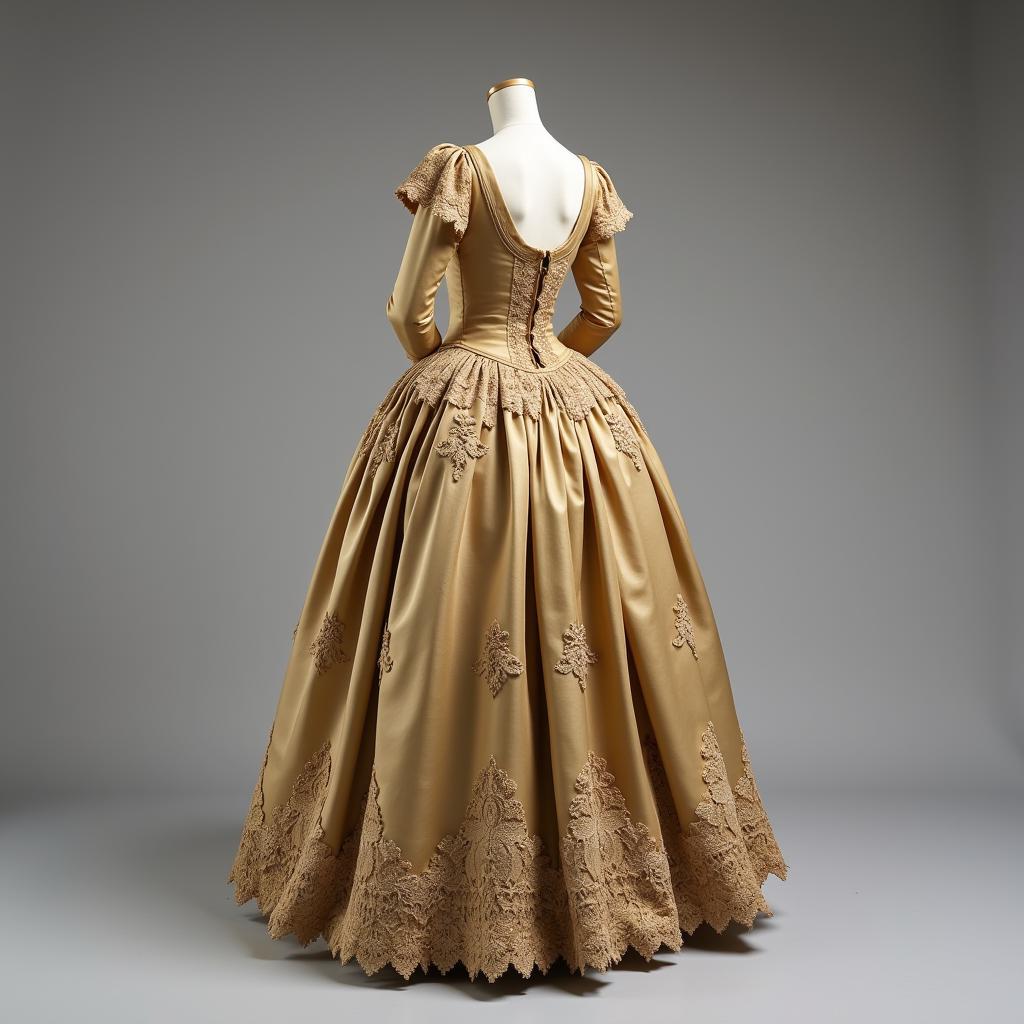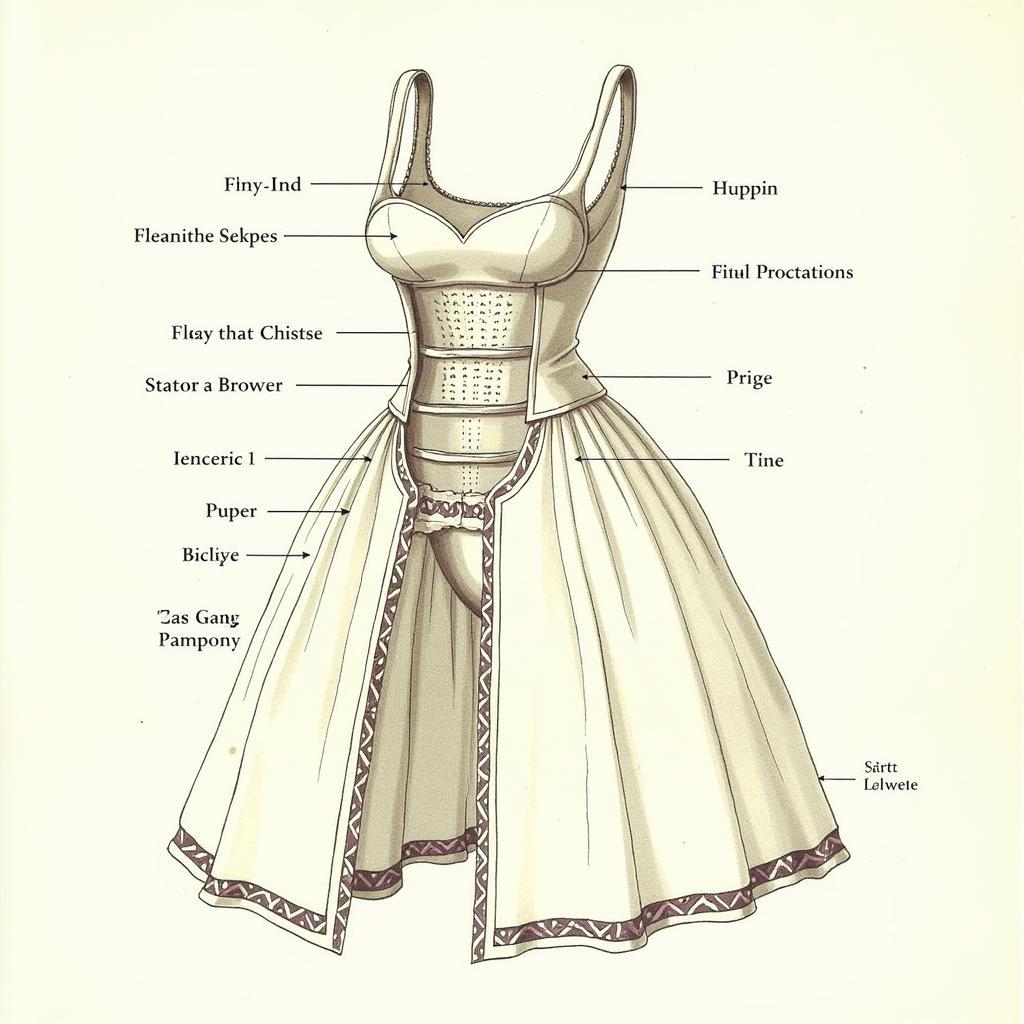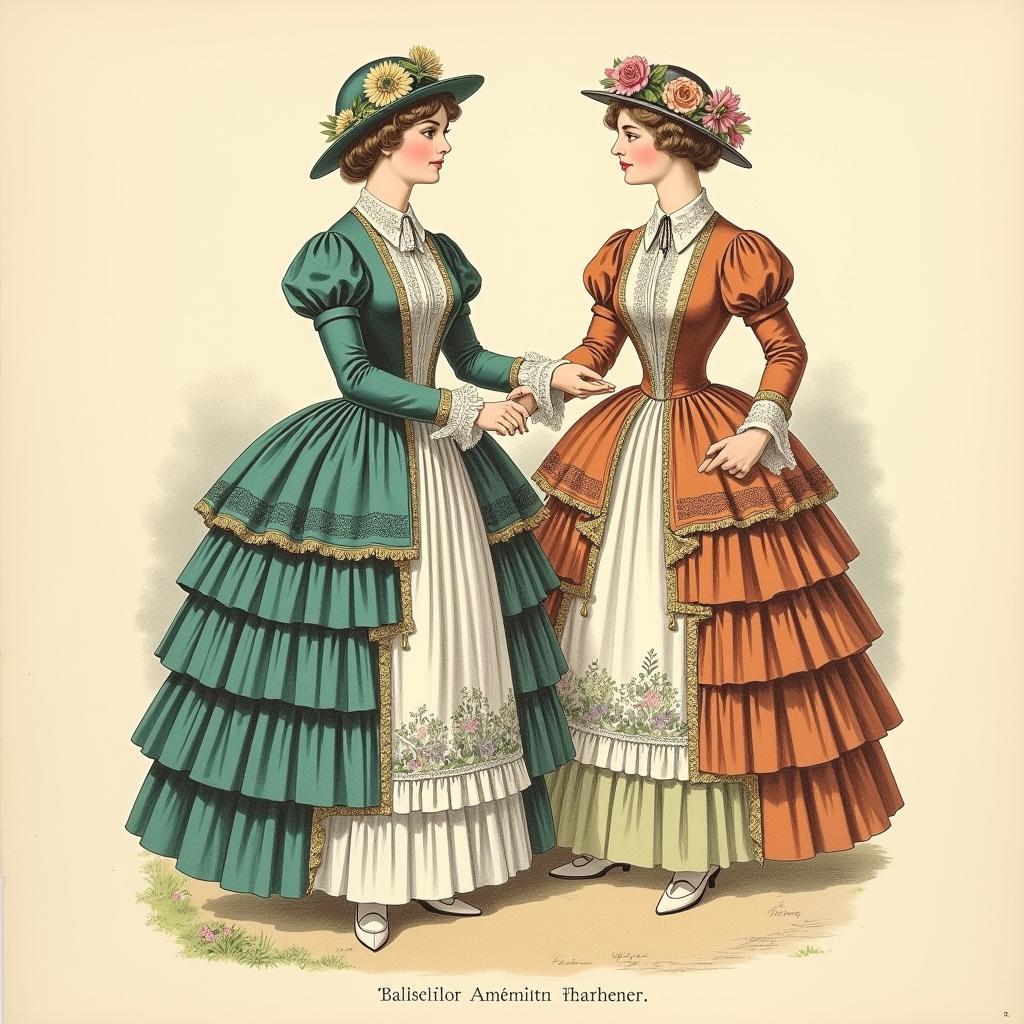French Bustle vs. American Bustle: A Detailed Comparison
October 10, 2024The bustle, a fascinating fashion phenomenon of the 19th century, continues to intrigue fashion enthusiasts and historians alike. Specifically, the distinctions between the french bustle vs. american bustle offer a glimpse into the evolution of silhouette and cultural influences on fashion trends. This article delves into the characteristics, historical context, and key differences between these two prominent bustle styles.
 Victorian Era French Bustle Dress
Victorian Era French Bustle Dress
Understanding the Bustle: A Fashion Revolution
The bustle, essentially a padded undergarment, emerged in the mid-1800s, designed to accentuate the female figure by creating an exaggerated fullness, drape, and volume at the rear of the skirt. This trend coincided with the rise of voluminous, floor-length skirts, which demanded structural support to achieve the desired silhouette.
The French Bustle: Epitome of Elegance
Originating in France, as the name suggests, the French bustle, also known as the “tournure,” gained prominence during the late 1870s and the 1880s.
Characteristics:
- Shape: Rounded and softly gathered, creating a more streamlined and less exaggerated silhouette compared to its American counterpart.
- Placement: Positioned lower on the back, often extending below the hips to create a flowing train.
- Construction: Typically constructed with layers of fabric, padding, and sometimes even a small cushion or pillow, emphasizing a softer, more natural drape.
 Anatomy of a French Bustle
Anatomy of a French Bustle
The French bustle embodied sophistication and understated elegance, reflecting the prevailing aesthetic sensibilities of the Belle Époque in France. It often complemented elaborate gowns adorned with ruffles, lace, and intricate drapery.
The American Bustle: A Bold Statement
Emerging slightly later, the American bustle gained popularity in the United States during the mid-1880s.
Characteristics:
- Shape: More structurally defined and shelf-like, projecting outward from the back in a more prominent and angular manner.
- Placement: Positioned higher, typically around the buttocks, creating a more dramatic silhouette.
- Construction: Often utilized a framework of hoops, wires, or even early forms of crinolines to achieve its distinctive shape and provide greater structural support.
 Fashion Plate of Women Wearing American Bustles
Fashion Plate of Women Wearing American Bustles
The American bustle exuded a sense of boldness and modernity, reflecting the rapidly changing social and cultural landscape of the United States during the Industrial Revolution. It paired well with simpler, tailored outfits, often made from sturdier fabrics.
French Bustle vs. American Bustle: Key Differences
While both bustle styles aimed to achieve a fashionable silhouette, their differences reflect the distinct cultural contexts from which they emerged:
- Silhouette: The French bustle offered a softer, more rounded silhouette, while the American bustle created a more dramatic, shelf-like shape.
- Placement: The French bustle sat lower on the back, while the American bustle was positioned higher.
- Structure: French bustles relied on layering and padding for structure, while American bustles often incorporated hoops or wires for greater support and a more defined shape.
- Cultural Impact: The French bustle epitomized French elegance and sophistication, while the American bustle reflected a bolder, more modern sensibility.
Conclusion
The “french bustle vs. american bustle” debate provides a captivating study in how fashion evolves and adapts across cultures. Though both styles served the same fundamental purpose, their unique characteristics highlight the subtle yet significant ways in which cultural nuances influence even the most seemingly frivolous aspects of our lives. The next time you encounter a depiction of 19th-century fashion, take a closer look at the bustle – it might just tell you more about the era and its cultural values than you’d expect.
FAQ
1. Were bustles only worn by wealthy women?
While bustles were certainly more prevalent among the upper classes, women from all walks of life adopted the style to some extent. Less elaborate and less expensive bustle options were available to those who couldn’t afford the elaborate versions favored by the wealthy.
2. Did women find bustles uncomfortable to wear?
Accounts from the era suggest that bustles, especially the more structurally complex American versions, could indeed be cumbersome and uncomfortable, particularly when sitting or moving in confined spaces. However, women endured the discomfort for the sake of fashion and societal expectations.
3. When did bustles fall out of fashion?
The bustle’s popularity began to wane by the early 1890s as fashion trends shifted towards looser, more flowing silhouettes. By the turn of the century, the bustle had largely disappeared from mainstream fashion.
Need help navigating the world of historical fashion? Contact us!
Phone: +84 915 117 113
Email: [email protected]
Address: To 3 Kp Binh An, Phu Thuong, Viet Nam, Binh Phuoc 830000, Vietnam.
Our dedicated team is available 24/7 to answer your questions and provide expert insights.